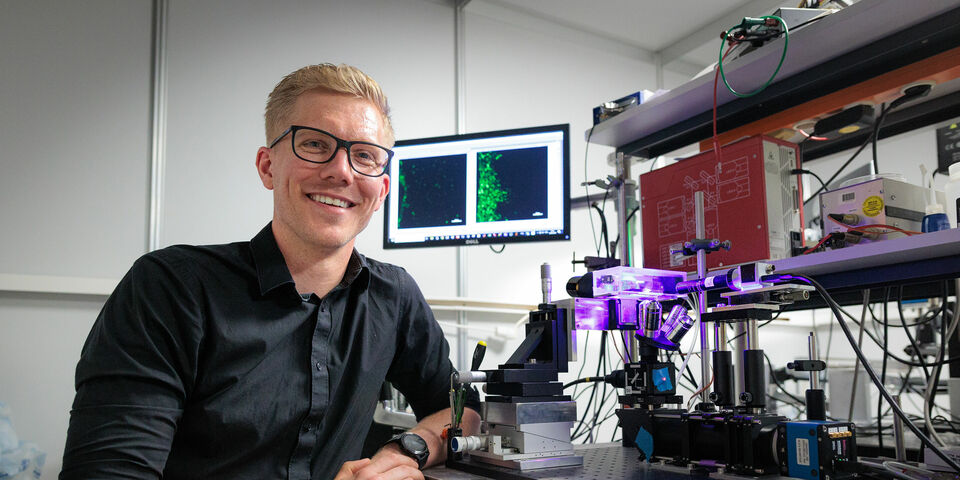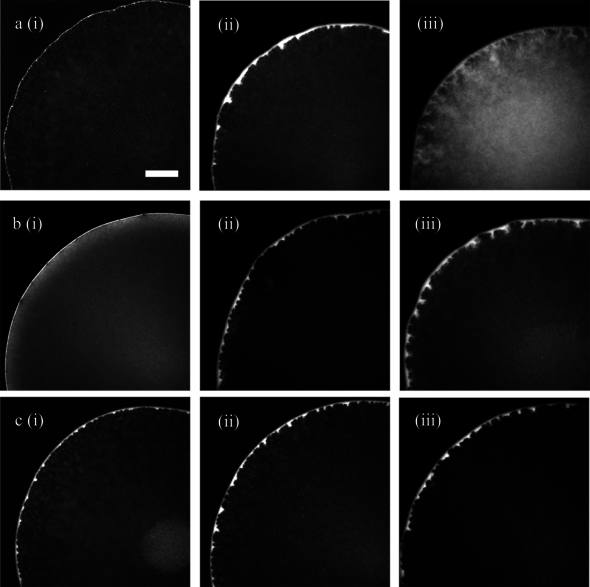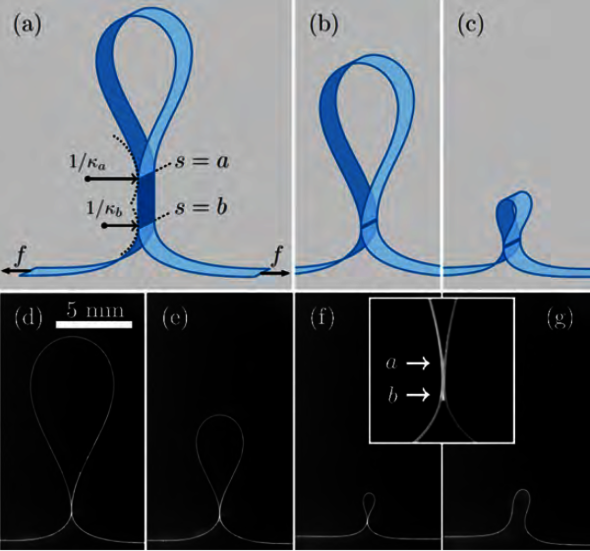Home Stretch | The mystery of the sticky tape loop
When you press the two sticky sides of a piece of adhesive tape together at a single point, a loop forms. Try to pull the loop apart, and something odd happens. Instead of instantly springing open, the loop first gets much smaller, until the sticky tape finally releases. This phenomenon so intrigued TU/e researcher Twan Wilting that he decided to study it as part of his PhD work.
At the time, Wilting was doing his master's in Applied Physics at TU/e. He was sitting in his student room and suddenly became intrigued by the behavior of a perfectly ordinary piece of sticky tape. “It struck me that a sticky tape loop doesn't immediately release if you pull at it, instead it first gets smaller,” he explains. “I thought, ‘huh, this is weird, how does that work?’” Wilting got in touch with various people on the internet, but no one knew the answer. “The fascination eased off a little, but the question stayed in my mind,” says the PhD candidate.
Sticky tape problem
At a lecture one day, he saw another opportunity. The speaker was professor Jacco Snoeijer and he was talking about adhesives. “I picked up some sticky tape at the reception desk, went up to him in the break, demonstrated the problem of the sticky tape loop and said, ‘Explain this,’” he says, laughing. And when Snoeijer didn't know the answer either, the ball started rolling. Wilting decided to unravel the sticky tape mystery as part of his own doctoral research.
Collective swimming behavior
The majority of Wilting's doctoral research is not about sticky tape, but about the collective swimming behavior of bacteria in evaporating droplets. Wilting observed how the bacteria disperse while swimming in a liquid that is drying up, and the patterns this creates. Greater fundamental understanding of this behavior is useful. It can help us, for example, to predict how bacteria survive in droplets of moisture, and which drying patterns they'll form. Knowledge that can help us stop their dispersal.
Wilting: “The ‘sticky tape problem’ wasn't among my objectives nor in my contract, but fortunately my supervisor was happy with the idea of my spending part of my PhD working on it.” Eventually, the PhD candidate spent 18 months on solving the sticky tape problem. Yesterday, he defended his doctoral thesis at the Department of Applied Physics and Science Education.
Painstaking work
Wilting's first step was to build an experimental setup equipped with a camera. This would enable him capture the best possible images of how sticky tape deforms when pulled apart. “I bought a range of sticky tapes – at the Hema, Jumbo, Action, and many more stores – to see if there was any difference between them,” he explains.
Next came the painstaking work of perfectly aligning the adhesive tape, before sticking it to itself to form a perfect loop. “If one piece is slightly askew, the more you pull, the more the tape curls, and we don't want that. This is very precise manual work.” All told, Wilting needed about half a kilometer of sticky tape to carry out his experiments.
In the lab, he shows the setup and explains how it all works. Once he has crafted a good loop in a piece of sticky tape, he attaches the tape to the machine (see image below). “Then you set a constant speed – anything from very slow to very fast – and the loop is pulled apart,” he says. Meanwhile the camera is capturing the sticky tape in profile. “We carried out various experiments, varying the time taken to pull the loop apart from 30 seconds to as much as twelve hours,” says Wilting. He discovered that the pull speed influences the curvature, and the size of the loop when it releases. “The faster you pull, the smaller the loop becomes before the tape comes apart.”
The critical loop size
He also found the answer to the key question: Why does the loop first get smaller before it releases, and which forces does this involve? “Imagine you have a sticky tape loop, you can label the two outermost points of contact as A and B,” he explains [see image below, ed.]. “When I pull on the sticky tape, the curvature at point B increases and at a critical value I can make point B move along, i.e. the contact here releases. So the distance between A and B decreases, until point A starts ‘to feel’ the presence of point B.” If there's a difference in curvature across a very short distance, the energy balance is affected. The sticky tape can reduce the total (bending) energy by reducing the curvature at point A, achieved by pushing against itself at point A. This extends the contact surface and the loop decreases in size. Eventually, the curvature at point A becomes so great that a critical value is reached at which the sticky tape releases at point A - this is the critical loop size.
Together with his colleagues, Wilting made a model to describe this behavior. Taking as their starting point the elasticity equation that describes how thin materials bend, they added the energy contribution that describes the interaction between the contact points A and B. They arrived at a model that can describe the deformation and predict the moment at which the loop will come apart.
His most important research finding is that the force needed to pull open a loop is not constant, but keeps increasing. “This wasn't included in previous thinking; you actually need more energy than was expected,” says Wilting. The model can be used in various applications in which the aim is to prevent adhesive layers coming apart, or, conversely, to remove loops and blisters, as is the case when stacking graphene layers, in electronics, or when designing screen protectors. “Now you can calculate precisely how much force is needed and the maximum load the material will tolerate before it breaks,” says the researcher.
PhD in the Picture
What's on the cover of your thesis publication?
“An image of bacteria at the edge of an evaporating droplet. You can see that some bacteria have washed up at the edge and that the thickness of this layer isn't consistent. This is one of the patterns that arises as droplets evaporate that I describe in my thesis.”
How do you let off steam when you're not in the lab?
“By riding a motorbike. I live on a renovated farm in the middle of nowhere, so I can chop some wood or do some gardening to unwind. When it's not raining, I prefer to be outdoors.”
How does your research help society?
If we can better understand how bacteria disperse based on drying patterns, we can impede or accelerate colonization, depending on the application, by controlling the evaporation.
What advice would you have liked to have received when you started your PhD?
“I've never been afraid to approach people and ask questions. But perhaps I should have asked a little more often, 'May I watch you work?' And then shadowed someone for, say, two months in the lab. You can tell someone how to do something, but it's even better to learn by doing it together.”
What's the next chapter for you?
“I'm now working for Philips Healthcare in Best. My work has nothing to do with fundamental research on droplets or sticky tape; I'm mainly using skills like programming, e.g. writing software for cameras, image processing. The team I'm in is working on automating the testing of X-ray scanners.”






Discussion